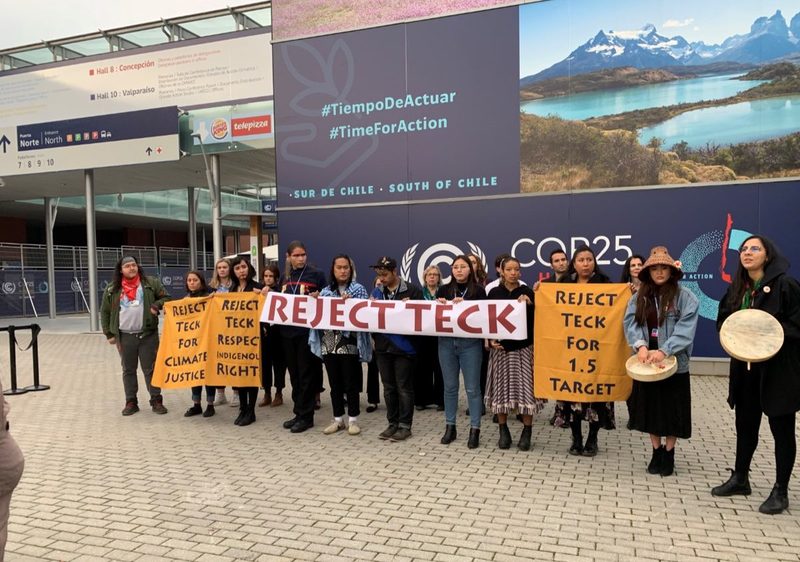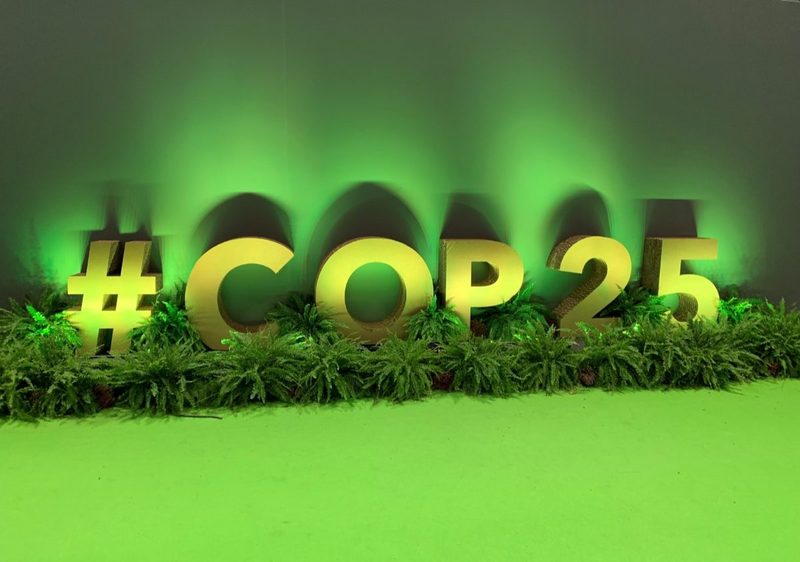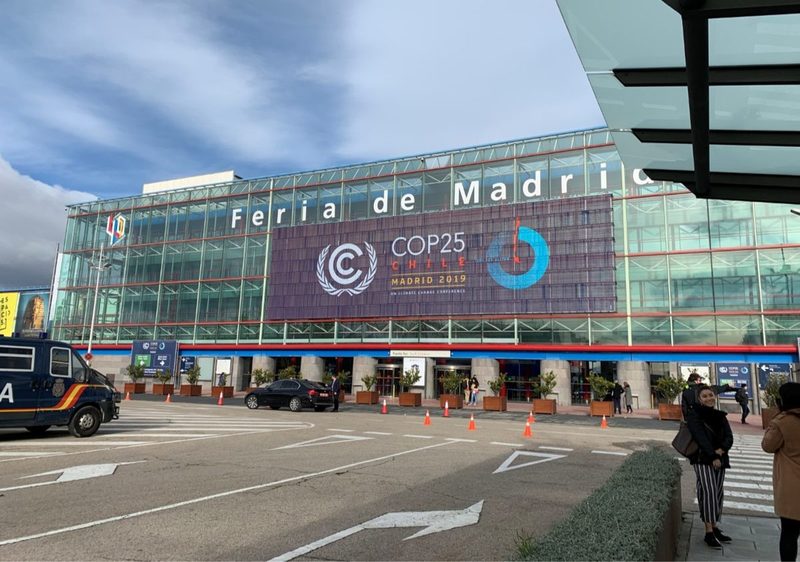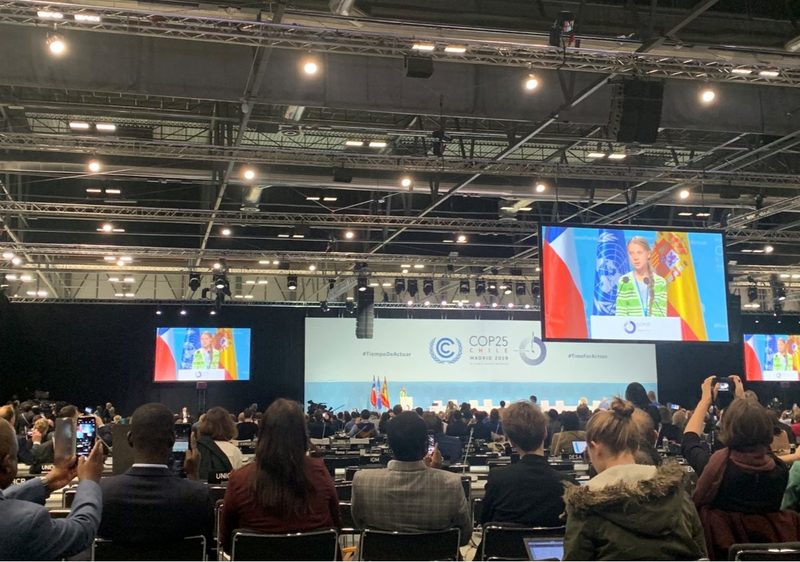COP25, a conference that began with a flurry of media attention, ended December 15th after falling woefully short of expectations. The UN climate change conference was plagued with bad luck before it had even begun. Brazil had originally planned to hold COP25, but reversed its decision only two months after agreeing to host. Chile replaced Brazil as host, but withdrew with only a month left before the conference, after weeks of mass protests in response to inequality in the country. With less than a month to go before the opening of COP25, the Spanish government announced that it would be held at IFEMA in Madrid.
Twenty-seven thousand delegates arrived in Madrid at the beginning of December for COP25. The conference was scheduled for twelve days, during which time negotiators would confirm the policy surrounding Article 6 of the Paris Agreement – the section which authorizes the global carbon market system – and determine financing for countries most vulnerable to the impacts of climate change. The day before the official opening of COP25, UN Secretary General António Guterres stated, “I expect a clear demonstration of increased climate action ambition & commitment out of COP25. Leaders of all countries need to show accountability & responsibility. Anything less would be a betrayal of our entire human family and all generations to come”.
Instead, the conference ran two days over schedule – making COP25 the longest meeting in the 25-year history of the conference – with most decisions pushed to next year’s conference in Glasgow, Scotland. Guterres’ statement echoed the massive push for climate action led by youth this past year, with more than four million joining a global climate strike in September. Civil action has become a reigning story over the past year, yet over the two weeks of the conference, the massive divide between the global push for action on climate change and the disappointing inaction from governments became clear.
I attended week two of the conference, and from the moment I stepped foot onto the venue, the mood felt somber. Negotiations inside the conference stumbled and fell flat, and as an observer at COP, I felt disheartened as I reported back home to Canada. One thing became clear from the very first day I attended – Canadians had a strong presence in Madrid. The first side event I attended, ‘Climate Action and Life below Water and on Land – Linkages with Human Activities’, had a roundtable introduced by David Suzuki. He asked, “Why, despite so many warnings for decades now, are we living in a way that is totally unsustainable?”, and stressed the need to find an ecocentric way of seeing the world.
Not long after I left the panel, Canadian Indigenous peoples held an action opposing the Teck Frontier oil sands project - now making headlines as the Liberal Cabinet will decide this month whether or not to approve the project. For the first time, actions were being held within the COP venue, rather than solely outside. From the moment the action began, a group of youth had gathered in support, and Green Party MP Elizabeth May quickly appeared... as did a number of armed security guards, moving closer with each passing minute. Despite my initial apprehension at seeing armed guards so close to us, I assured myself that they wouldn’t take action against a peaceful action. As the week continued, it became clear that I had thought wrong.

Tuesday brought a severe increase in security at COP, as Ministers arrived in Madrid. Also arriving at COP that day was Greta Thunberg, who arrived in Madrid after a three-week journey across the Atlantic Ocean following the relocation of COP from Chile.
On Wednesday December 11, she addressed a crowded room in Planery Baker, with a scathing message for government officials. “Finding holistic solutions is what the COP should be all about, but instead it seems to have turned into some kind of opportunity for countries to negotiate loopholes and to avoid raising their ambition,” Thunberg said, followed by a round of applause from the crowd.
“We are desperate for any sign of hope. I’ve given many speeches and learned that when you talk in public you should start with something personal or emotional to get everyone’s attention, say things like, ‘our house is on fire’, ‘I want you to panic’, and ‘how dare you’. But today I will not do that, because then those phrases are all that people focus on. They don’t remember the facts”. She finished her speech with a strong message – “I am telling you there is hope. I have seen it. But it does not come from governments or corporations. It comes from the people”.
That same day, Greta Thunberg was named Time Magazine’s Person of the Year. At the same time, an action within COP25 that spelled hope for many resulted in hundreds of observers being forced out of the venue. On Wednesday afternoon, hundreds of demonstrators gathered outside of Planery Baker, the very room in which Thunberg had given her speech only hours before, and performed a cacerolazo, a form of protest originating in Chile. Their motto was, “Step up, pay up” – a direct message to the wealthy industrialized countries who refused to meet their commitments under the Paris Agreement and human rights law to provide finances to support communities suffering from increasingly severe disasters as a direct result of climate change. COP25 made the decision to physically remove hundreds of activists from the venue, and debadged.
The atmosphere at COP25 for the rest of the day was hard to describe. All observers were barred from entering the venue for the remainder of the day, and most of us spent the evening wondering if we would be allowed back in for the rest of the week. That evening, the Government of Canada hosted a reception for Canadians at COP – it was a strange day, to say the least. Following Canadian Minister of Environmental Jonathan Wilkinson’s remarks, Elizabeth May introduced youth Indigenous activists who just hours before had been removed from COP25, who pushed for an end to the Teck Frontier mine. I would like to say that the entire room of Canadians stood and listened, but they didn’t.
The following two days that I was at COP remained somber. Negotiators were exhausted, and observers feeling downtrodden. More and more side events hosted ‘happy hour’ following panels, hoping to draw in fatigued attendees with the promise of wine. Negotiations finally wrapped on Sunday afternoon, two days over schedule, with little progress having been made. At COP26 in Glasgow in 2020, countries will need to provide their Nationally Determined Contributions. With decisions regarding Article 16 pushed to next year, the agenda in Glasgow will nearly double in size. How much can we possibly achieve then?
As a recent MA graduate, I have spent my entire academic career studying COP negotiations. Being present in Madrid to watch the break down of this conference left me with a feeling of unease for the future.
But while the officials at COP25 did little to nothing to advance action on climate change, civil society found its voice within the walls of the venue. We cannot lose this momentum. We are ended 2019 at a time of unbearable disaster – wildfires in Australia have been raging for more than a month, destroying 3 million acres of bushland and killing untold amounts of wildlife. In all, the climate crisis has been linked to at least 15 disasters last year, with damages over $1 billion each. Global activism on climate change needs to push us forward on climate action, to ensure that nations meeting in Glasgow next year will up their commitments to keep average global temperature increase to 1.5C.
In 2020, I am going to hold our leaders’ feet to the fire by meeting with my local MP, and encouraging Sierra Youth and Club members do the same.



